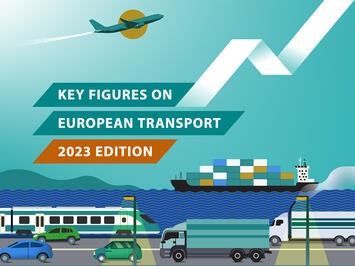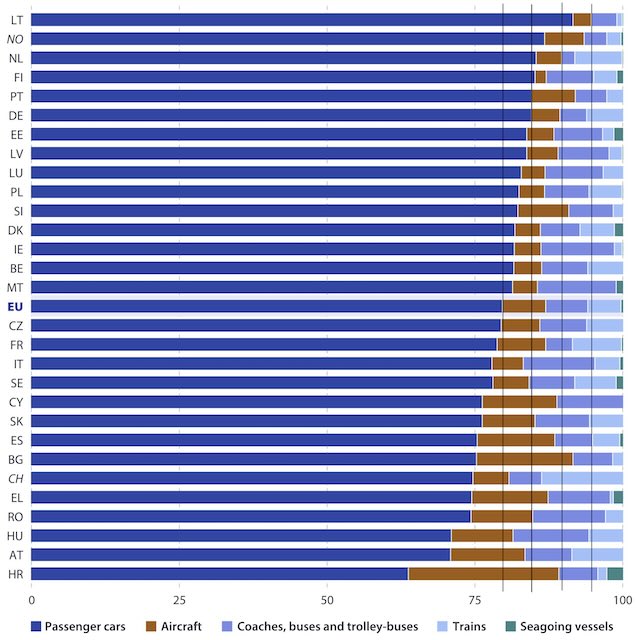
Before the pandemic, Europeans relied on automobiles for 70 percent of their travel, compared with 77 percent for U.S. residents. But after the pandemic, in 2021, the European share of passenger travel that used automobiles climbed to 80 percent, while the U.S. share increased only to 78 percent (and dropped to 74 percent in 2022), according to a recently released report from the European Union. That means that Europe is more auto-dependent than the U.S.
Although the report is labeled “2023,” it actually was released in late January 2024 and includes data through 2021. The title of the report is “key figures,” which is literally true: it consists almost solely of figures as in charts, with little or no actual data. However, the charts are clear and can be read to the nearest percent or so. Meanwhile, National Transportation Statistics table 1-40 shows the share of passenger travel in the United States that relies on autos, airplanes, rail, and other modes.
Mode Shares by Country

I added lines corresponding to 80, 85, 90, and 95 percent to help estimate mode shares. See the second page of the report for the counties that correspond to the two-letter codes shown on this chart.
Page 13 of the European report breaks down transport shares for each member of the European Union. Although they are not members, Norway and Switzerland (CH) are also included, but the United Kingdom has been spitefully deleted. In any case, about half the members of the EU rely on autos for a greater share of passenger travel than the U.S. These include Germany, Belgium, Poland, Finland, and non-member Norway. The only countries that are significantly less dependent on autos than the U.S. are Austria, Croatia, and Hungary.
Of course, I prefer to use the term “auto liberated” rather than auto dependent as liberation better reflects the actual benefits of auto ownership. Autos give people better access to jobs, quality housing, lower-cost consumer goods, and other economic and social benefits than any other form of urban travel.
Despite many European countries spending billions on high-speed rail, rail’s share of travel declined from about 8 percent before the pandemic to about 6 percent in 2021. In the U.S., counting both urban and intercity rail, it went from 0.6 percent in 2019 to 0.25 percent in 2021, recovering to 0.4 percent in 2022. While rail’s share is insignificant in the U.S., it is not very important in Europe either.
Switzerland hasn’t built any high-speed rail yet it relies on rail for more of its passenger travel than any other European country, about 13 percent. Spain has built more high-speed rail than any European country, yet rail’s share there is less than 5 percent. Austria is 8 percent. France, with the second-most high-speed rail, is around 7 percent as is the Netherlands. Every other country appears to be less than 7 percent. (Keep in mind these shares include both intercity and urban rail.)
Read the rest of this piece at The Antiplanner.
Randal O'Toole, the Antiplanner, is a policy analyst with nearly 50 years of experience reviewing transportation and land-use plans and the author of The Best-Laid Plans: How Government Planning Harms Your Quality of Life, Your Pocketbook, and Your Future.
Photo: Screenshot of report cover.












